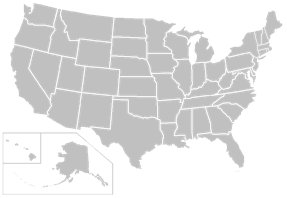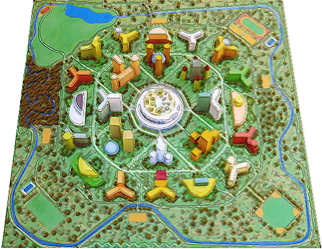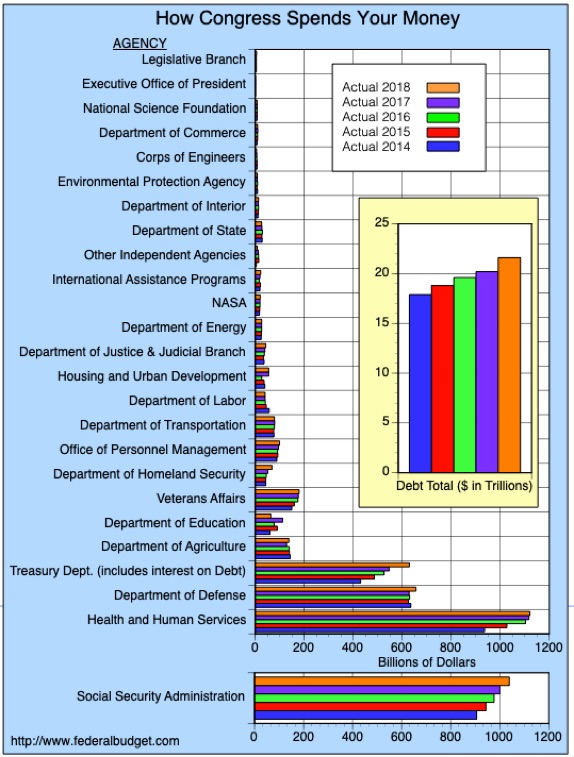




Plan C Dormant Conditions
During severe economic downturns, an affected company would go into a dormant state rather than shut down. Its employees would go on unpaid furlough rather than be laid off and would be recalled when work became available. Increased community service allows furloughed employee-residents to retain their housing and pay most or all their housing cost with earned Community Credit. Participating employers, in order to avoid permanent shutdown, must be debt-free, insured, subsidized, or otherwise able to reorganize or freeze obligations to be covered for the dormant period. This plan would preserve a company’s physical, business, and workforce assets as well as its employees’ jobs, housing and essential quality of life.



Employee’s
Time
Allocation

Time Spent
on the
JOB
Time Spent on
Community
Service





Time Spent
on the
JOB
Time Spent on
Community
Service
Plan B Variable Conditions
During moderate economic hard times, affected employees’ commitments would be varied according to a negotiated scale. In accord with those agreements, affected companies would reduce some or all employees’ work-hours. Affected employees would work more hours in community service and pay a larger portion of their housing cost with earned Community Credit. This option provides the opportunity for employers and employees to calibrate their variable agreements securing their quality of life.
Plan A Normal Conditions
Under normal conditions an employee-resident’s time allocations are balanced between employment and community service according to their basic agreement. All residents participate in community service for which they earn Community Credit used to pay a portion of their housing cost.
Ground Floor: The Holigent Delta Plan





Time Spent
on the
JOB
Time Spent on
Community
Service

Generic, not the actual property
A multipurpose project that begins with the acquisition of a suitable real property. The property will be renovated to serve as live/learn/work arrangements for students studying and practicing Holigent hybrid socioeconomic reorganization of community.
Step 1: The Holigent Seed Project





Generic, not the actual property







The Delta Plan
The Holigent Delta Plan is a three-way agreement between participating employers, their participating employee-residents of the “Village” and a nonprofit developer/management organization. Economic security is achieved through the Delta Plan by maintaining balance between local and global economies. The Holigent arrangement helps generate and retain local value and wealth, providing a “firewall” to protect participating communities against the unpredictability of the national and global economies even during recessionary times. With these three-way agreements the nonprofit management organization is able to underwrite business continuity, job and housing security, and quality of life for all occupants of a Holigent community. Three general scenarios are highlighted below to illustrate the key aspects of the hybrid economic arrangement.
Holigent Reconstruct America

Step by step local to global
Holigent Reconstruction
This page concentrates mostly on the physical reconstruction of society, one community at a time. We need to remember that societal renewal in the Holigent (holistic-emergent) spirit is systemic reconstruction that includes social, economic and environmental aspects as well. When we accomplish such systemic synergetic rearrangements of all aspects of society there is a "holistic-emergent" higher order outcome that secures universal quality of life, peace and true sustainability for all the residents of such society.
In order to follow the example of natural evolutionary self-organization –– "Nature's building code," the only truly sustainable systemic self-organizational model –– the Holigent Project proposes that each Holigent Community design its own Delta Plan within the Holigent spirit to allow for variations out of which best practices and continuous improvement will emerge.
Order the book Holigent RECONSTRUCT America, Europe, the World from Amazon.com
Summary of Projected Impacts
Economic Impact
Economic Impact on the Individual
An individual, living car-free in a Holigent community will be able to eliminate the cost of car purchase, insurance, maintenance, fuel and other car-related expenses. Rent reduction through C-credit earned in community service will further reduce the cost of living. The Holigent socioeconomic arrangement (Delta Plan) helps secure job and affordable housing.
Reducing Reliance on Oil
For decades the U.S. imported over 50% of the oil needed to run our economy. At that rate the U.S. economy is potentially held hostage to foreign oil and some of our oil money found its way to terrorist organizations and still helps to finance their operations against the U.S. Consequently the U.S. had to spend additional billions of dollars to fight terrorism. Under the buzz about the newfound U.S. oil riches, there are justified concerns about the probable short life expectancy of “fracking” and serious concerns about the accompanying environmental damage. Holigent Reconstruct America would progressively and significantly lower energy demand and demonstrate a replicable socioeconomic model of high productivity at reduced reliance on fossil fuel.
Helping to Balance Trade
This Proposal will reduce consumption of goods and energy thus improve US balance of trade.
Social Impact
Saved Commute Time
On average, an individual participating in the car-free live/work program will save 240 hours per year based on the typical big city commutes. Community service commitments convert part of that saved time to economic value for the individual and for the community. In addition, interaction and bonding with team members during community service provides a social benefit. The rest of the time reclaimed from the car commute will increase residents’ free time for social activities and recreation, further improving the quality of life.
Health Benefits
Holigent Urban Villages, with car-free pedestrian cores, provide for their residents a built-in opportunity for daily walks. In addition, participation in community construction and maintenance provide additional opportunity for physical activity. Parks with recreational facilities within the community complex will contribute to healthful and stress-free living. Research associates such stress-free and healthful lifestyles with improved fitness and lower incidences of illness.
Social and Economic Security
The Holigent Solution through its Variable Commitment Allocation Plan (Delta Plan) provides agreements among participating employers, their employee-residents, and the nonprofit community developer/management organization by which individuals will be able to preserve their jobs and their housing even during economic recessions. The arrangements will help preserve social and economic continuity and security.
Improved Quality of Life
In a Holigent Village quality of life will be secured by means other than money alone. Consequently money will loose its monopoly on value exchange. The hybrid arrangement provided by the physical and economic rearrangements of life and work, summarized in the Delta Plan, will increasingly secure quality of life unaffected by local or global economic downturns.
Impact on Transportation
Reduced Traffic Congestion
As the project expands and participation grows each year, a greater number of people will transition from car-dependent to car-free living. Fewer cars on the roads will reduce the number of auto accidents and will decrease traffic congestion. Faster-flowing traffic will result in reduced energy consumption, fewer wasted hours and improved productivity.
Improved Mass Transportation
The Holigent developments, with future cellular arrangement of urban villages, will lend itself to the development of an efficient high-speed electric train or monorail mass transit lines that will connect Holigent Villages and to existing transit lines. The Holigent Solution will promote the development and use of efficient mass transit systems.
Environmental Impact
Reduced CO2 Emissions
Fully developed Holigent Urban Villages could be 80% to 100% car-free. According to EPA, the average car emits over 5 tons of CO2 per year. Accordingly, this program can yield a significant reduction of CO2 emissions. There will be additional reduction in CO2 emission and other pollutants associated with the manufacture and shipping of cars.
Environmental Restoration and Protection
A portion of the direct human resource derived from community service will be allocated to habitat restoration and environmental protection in and adjacent to Holigent developments.
Reducing the Burden on Government
The Department of Health and Human Services, the Social Security Administration, the Department of Defense, and the Treasury Department (servicing the national debt), are the four entities of the Federal Government with budgets towering over those of all other federal agencies. Their spending is mainly responsible for the $27 trillion (as of end 2020) national debt.
Reducing the Burden on the Social Security Administration
The Social Security Administration’s budget for 2013 was over $800 billion and growing. The Federal government is uncertain whether it can sustain the current level of social security benefits much longer. The Holigent Proposal could tackle this dilemma. In addition to the rental income, Holigent Communities are projected to generate direct human resources derived from the members’ community service agreements. With the self generated resources and built-in arrangements of social and economic security, the Holigent Communities will have a capacity to assist all its participating residents, into their old age, thus requiring reduced assistance from the Social Security Administration.
Reducing the Burden on the Department of Health and Human Services
The U.S. Department of Health and Human Services, at nearly $900 billion (2013), is the largest in the Federal budget. This department is a major contributor to unsustainable federal spending. The solution for health and well-being provided through the Holigent Proposal is focused on lifestyle and prevention of illness as well as providing a community-supported health care system.
An emphasis on walking in the pedestrian Villages and the participation in community service will provide a built-in routine of physical exercise. Car-free living, reduced rent, and the absence of a freeway commute will reduce stress levels. Social and economic security in walkable compact urban villages improves the quality of life. It is well documented by research that an active, secure and stress-free lifestyle is an effective way to maintain physical and emotional health and fitness.
In addition to these built-in preventions, Holigent Communities will have the self-generated funds and human resources to provide excellent health and human services with reduced assistance from the Federal government, thus reducing the burden on the Department of Health and Human Services.


H O L I G E N T
Societal Reconstruction


Holigent ® is a registered trademark • The Alliance to Reconstruct America™ • Copyright © 2010, 2018 A. Nicholas Frank
A Quick Glance at the
U.S. Federal Budget
Reducing the Burden on the Defense Department
The 2018 U.S. military budget is over $600 billion. Without deeper analysis, one might say that it is a far stretch to think that the Holigent Proposal can make a dent on this figure and reduce the burden on the Defense Department. However, since conventional wisdom and methods are failing to solve the most urgent 21st century problems that the U.S. and the world are facing, this Proposal is indeed proposing unconventional solutions.
After sufficient priming, the Holigent Proposal would develop self financed, and to a degree, self reliant communities. Such communities would have a lighter footprint on the economic, environmental and political fabric of the world. International models developed through the Holigent Solution would be shared with communities around the world. This global program would help build international teams and partnerships expanding the Holigent Peace and Sustainability movement and reconstruction around the globe. The new communities developed by Holigent nonprofit NGO projects will be largely independent of governments and at lowered vulnerability to energy crises and recessions of the global economy.
A non-threatening and more intimate outreach and cooperation between Americans and communities around the world has the potential to reduce tensions and build international trust. In view of the new reality in which the most pressing problems of our planet do not lend themselves to military solutions, through the implementation of the Holigent Solution eventually most Americans will feel comfortable with a somewhat smaller and well-reasoned United States Defense budget.
Reducing the Burden on the Treasury Department
The Holigent Solution will reduce monetary demand on the Social Security Administration, the Department of Health and Human Services, and the Department of Defense – the three money-guzzlers of the U.S. Government that ring up most of the deficit spending. When the U.S. Government is assisted by the Holigent Program in reducing or eliminating deficit spending it can reduce the U.S. debt. When the debt is reduced the cost of servicing the debt will decline. Through such indirect yet positive means this Proposal will help reduce the burden on the Treasury Department.
Promoting Global Peace and Sustainability
Building Partnerships
From the beginning, Holigent Projects will invite individuals from other nations to train in the United States and then take the program with them to communities around the world in order to help seed the concept and the program internationally. As the programs grow in the U.S. and in communities around the world, international teams and partnerships will form to expand and spread to include ever-larger international participation.
Partnering with Governments and the United Nations
The U.S. program can work with other governments and the United Nations to demonstrate the advantages of investing in a long-term systemic solution rather than fighting problems. The model offered by the Holigent Proposal has the potential to provide a relatively inexpensive and self-perpetuating systemic solution to many of the world’s economic, social, and environmental problems.
The Hope Factor in Peace Building
The objective of globalizing the Holigent Solution is two-fold:
To demonstrate the proposed hybrid socioeconomic model that offers solutions to the multi-layered social, economic and environmental problems faced by communities around the world.
To offer the Holigent Solution as a generator of hope. We know that hope is a powerful mitigator of collective stress and anxiety. We also know that when collective social and economic stress is mitigated and collective energy is focused on a constructive project, social disorder and war can be avoided.




Rational thought process











E
F





Rational thought process


War






E
F
In an environment of hopelessness the correlation between stress and peace is such that as stress levels surpass the physiological optimal and elevate to chronic high levels, rational problem-solving ability diminishes while the intensity of conflicts takes a sharp upturn. All along, prospects for peace diminish. As collective stress increases, peace prospects die and civil disorder, riots, terrorism or war follow.
When the collective reservoir of hope is high, hope displaces despair and people set their sights on a more positive future. This preserves the rational thought process, which helps conflict resolution and reduces collective stress and anxiety. Consequently, prospects for peace are restored as conflicts and war are avoided. The hope factor generated by Holigent projects may significantly amplify, beyond their scale, their long-term positive impact.
In conclusion we can say that the Holigent Project proposal contains at least four essential elements:
-
•Physical rearrangement of work and living
-
•Rerouting parts of wealth migration back to the “99%”
-
•Hybridizing value exchange to diminish reliance on money
-
•Cellular rearrangement of societal structure, governance and power
Conclusion
• Physical rearrangement
of work and living
Holigent Villages would provide the infrastructure in which we could rearrange the way we live, work, commute, produce, consume, educate and govern ourselves to satisfy the sustainability imperative –– Do the essential most with the least of resources without conflict and without waste to secure quality of life and systemic sustainability for your progeny, the greater good and your life support environment.



From car-dependent sprawl
To live/work/walk Holigent Villages
• Rerouting parts of wealth migration
back to the “99%”




“99%”









“1%”













“1%”




“99%”
In our present system wealth migrates from the “99%” to the “1%”.
The Holigent hybrid system reroutes parts of wealth migration back to the benefit of the “99%” without destroying wealth or the creators of wealth.
• Hybridizing value exchange
to diminish reliance on money
The Holigent hybrid socioeconomic arrangement would move away from full reliance on money and toward a variable reliance on money and direct human resource input (community service/social contract) to secure quality of life even during severe general/global economic downturns.

THE
HOLIGENT
DELTA PLAN

ALL MONEY

QUALITY
OF LIFE



MONEY

HUMAN RESOURCE
VARIABLE HYBRID
• Cellular rearrangement of
societal structure, governance and power
The self-generated funds of your organization’s Holigent Village will be added to the funds provided by private/public grants. Holigent Villages will proliferate across America and naturally form collaborative networks. Over time, the vertical pyramidal construct of our present socio-political structure will gradually transition to a more horizontal, cellular arrangement.
In the new Holigent arrangement the highly concentrated vertical power will gradually migrate to local communities. The cellular arrangement of self-organized Holigent Villages will take over much of physical and social maintenance, thus reducing the burden and the size of government while securing social, economic and environmental justice, quality and systemic sustainability for its residents.



Our current big vertical societal structure
Cellular restructuring of society over time

• Emergence
of a new societal organizing practice
The confluence of the above four aspects of socioeconomic rearrangement will result in a new societal organizing practice that is better aligned with “nature’s building and sustainability code” to protect the environment and nurture Earth’s life support capacity while securing universal quality of life in resilient peaceful systemic sustainability.